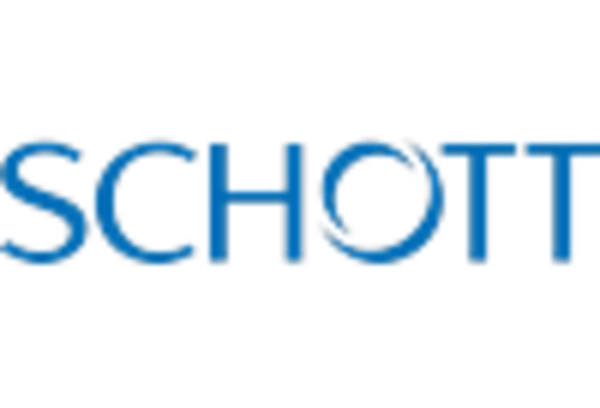Enhanced Aesthetic Appeal
The low e-glass market is also witnessing a shift driven by the enhanced aesthetic appeal of low e-glass products. Architects and designers are increasingly recognizing the visual benefits of low e-glass, which not only improves energy efficiency but also contributes to the overall aesthetics of buildings. The ability to create larger glass facades without compromising thermal performance is particularly attractive in modern architecture. This trend is leading to a greater acceptance of low e-glass in high-end residential and commercial projects. As a result, the market is likely to experience growth as more projects incorporate low e-glass to achieve both functional and aesthetic objectives. Industry forecasts suggest that this driver could contribute to a market growth rate of approximately 7% over the next few years, as the demand for visually appealing, energy-efficient solutions continues to rise.
Growing Consumer Awareness
Consumer awareness regarding energy efficiency and sustainability is a pivotal driver for the low e-glass market. As individuals become more informed about the environmental impact of their choices, there is a noticeable shift towards energy-efficient products. Surveys indicate that approximately 70% of homeowners in the U.S. are willing to invest in energy-efficient solutions, including low e-glass, to reduce their energy bills and carbon footprint. This growing consciousness is not only influencing purchasing decisions but also prompting manufacturers to innovate and improve their offerings. Consequently, the low e-glass market is likely to see an increase in demand, as consumers actively seek out products that align with their values. This trend is expected to contribute to a robust market growth trajectory, potentially reaching a valuation of $5 billion by 2027.
Increased Regulatory Support
The low e-glass market is experiencing a surge in demand due to heightened regulatory support aimed at enhancing energy efficiency in buildings. Various state and federal regulations are being implemented to promote the use of energy-efficient materials, including low e-glass. For instance, the U.S. Department of Energy has established guidelines that encourage the adoption of low e-glass in both residential and commercial construction. This regulatory framework not only incentivizes builders to incorporate low e-glass but also aligns with broader sustainability goals. As a result, the market is projected to grow significantly, with estimates suggesting a compound annual growth rate (CAGR) of around 8% over the next five years. This regulatory push is likely to solidify the position of low e-glass as a preferred choice in the construction sector.
Rising Construction Activities
The low e-glass market is benefiting from a resurgence in construction activities across the United States. With urbanization and population growth driving the need for new residential and commercial buildings, the demand for energy-efficient materials is on the rise. According to the U.S. Census Bureau, construction spending has increased by over 5% in the past year, with a notable emphasis on sustainable building practices. This trend is encouraging builders to opt for low e-glass as a viable solution to meet energy efficiency requirements. Furthermore, the integration of low e-glass in new projects is becoming a standard practice, as it helps in achieving compliance with energy codes. This growing construction momentum is expected to propel the low e-glass market, potentially reaching a market size of $4 billion by 2026.
Advancements in Coating Technologies
Technological advancements in coating technologies are significantly impacting the low e-glass market. Innovations in low-emissivity coatings have enhanced the performance characteristics of low e-glass, making it more appealing to architects and builders. These advancements allow for better thermal insulation and solar control, which are critical factors in energy-efficient building design. The introduction of new materials and application techniques has also reduced production costs, making low e-glass more accessible to a broader range of consumers. As a result, the market is witnessing an influx of new products that cater to diverse architectural needs. Industry analysts project that the adoption of these advanced coatings could lead to a market expansion of approximately 10% annually, as more construction projects incorporate low e-glass to meet energy efficiency standards.

















Leave a Comment